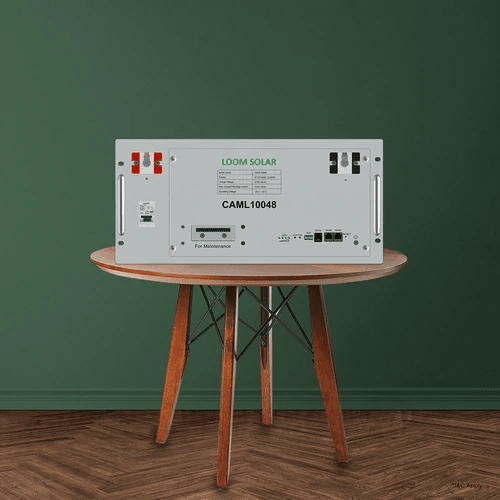During discharge, lithium ions flow from the negative electrode to the positive electrode of lithium-ion batteries through an electrolyte. Chargers operate in the opposite manner. Batteries using lithium-ion cells usually employ lithium as the active ingredient and graphite as the passive material. When compared to lead-acid batteries, the lithium-ion battery has obvious benefits in terms of core technical advantages. Since its inception, it has been the subject of much inquiry.
How does it work?
Lithium ions in the electrolyte flow back and forth between the positive and negative electrodes of lithium-ion (Li-ion) batteries, storing and releasing energy through solar inverter. The positive electrode serves as the initial lithium source, while the negative electrode serves as the host for lithium in this method of lithium-ion storage. Due to decades of careful selection and optimization of both the positive and negative active materials, a wide range of chemistries known as li-ion batteries has emerged. Present positive materials are often made of metal oxides or phosphates that have been lithiated. Negative materials include graphite, graphite/silicon, and lithiated titanium oxides.
Which Battery Is Better: A Lithium Battery Or A Conventional Battery?
- To put it another way, lithium batteries for sale have a greater energy-to-weight ratio and energy-to-volume ratio than a conventional batteries.
- In addition to having a lower self-discharge rate, lithium-ion batteries may be kept for longer periods of time.
- When charging and discharging lithium batteries, the total number of charge/discharge cycles is significantly more than 500;
- Charging takes just a couple of minutes. One to two hours is the typical charging period for lithium batteries, which are typically charged at 0.5-0.1% of their rated capacity;
- Last but not least, the lithium-ion battery packs are the most sophisticated environmentally safe battery since they don’t include cadmium, lead, mercury, or any other heavy metals;
Lithium-Ion battery is created using modern technology and innovation in India. These are offered in various capacities to fulfill customer demands. Loom Solar, a lithium battery manufacturer offers the greatest quality items for a hassle-free solar experience.
Suppliers of Lithium-Ion Battery Packs in India, Loom Solar has partnered with major raw material suppliers and modernization. They have development-class R&D, engineering and assembly teams. So their portable rechargeable battery packs are reliable.
Lower Maintenance
Battery maintenance is minimal with lithium batteries. Lithium batteries are easy to use and care for.
No need for periodic discharge as with conventional batteries. A ‘balancing’ mechanism is required for certain other batteries to ensure that all cells are charged evenly. For lithium batteries, the Battery Management system automatically does this.
The deployment of lithium batteries is also easier. They are lightweight and simple to pack. Their storage doesn’t need a vented battery compartment or upright storage. Their unusual shapes may be constructed.
Also read: Great Benefits of Solar Panel Installation
How much does a Lithium Battery cost?
It is projected that lithium battery prices will continue to reduce as a result of large expenditures in technology, as well as improvements in manufacturing methods. An estimated 73% of the world’s lithium battery storage is produced in China, and the country intends to build several multi-gigawatt facilities in the future. India’s price sensitivity means that manufacturers prefer to buy batteries from China rather than the local market, which lacks sufficient capacity. India receives lower-quality batteries from China whereas China is focusing on high-quality and high-density batteries.






